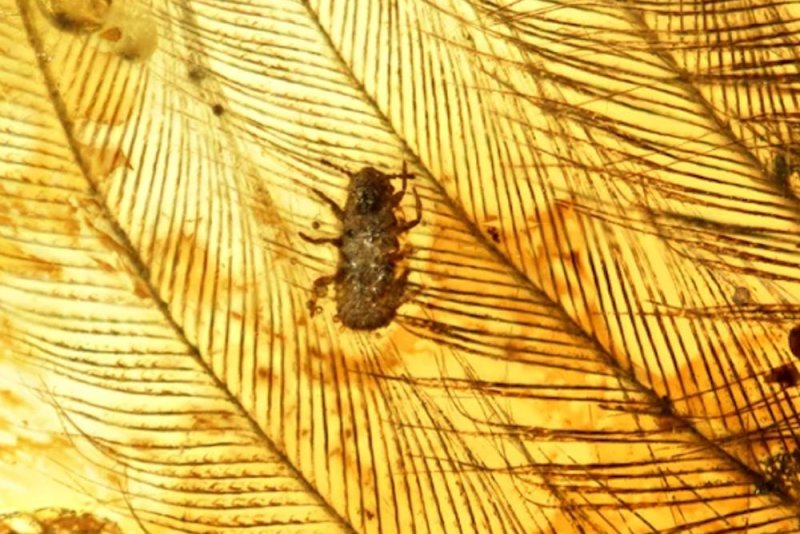Scientists found several tiny feather-eating lice trapped in ancient amber fossils. Photo by Taiping Gao
Dec. 10 (UPI) -- Paleontologists have discovered insects resembling modern lice on dinosaur feathers trapped inside 100-million-year-old amber fossils, the earliest evidence of lice-like parasites.
Scientists described the discovery this week in the journal Nature Communications.
"The preservation in amber is extremely good, so good it's almost like live insects," study co-author Chungkun Shih, a paleoentomologist at Capital Normal University in Beijing, told the Smithsonian Magazine.
Inside two pieces of Burmese amber, scientists found 10 insects on feathers that looked like they had been damaged, as if they'd been eaten.
Researchers have previously found evidence that dinosaurs were plagued by blood-sucking ticks, fleas and other parasites, but the latest discovery pushes back the earliest appearance of lice by 55 million years.
Shih and his colleagues named the new lice-like species Mesophthirus engeli. Scientists were surprised to find the lice were significant smaller than their modern relatives.
"Based on our studies of fossil fleas, we thought that if we were looking for lice, the size may be bigger than today's lice, but [they] turned out to be very small," Shih told the Guardian. "That can explain why on compression fossils [in rocks] we cannot find any lice."
Their small size likely explains why they've taken so long to be discovered.
"It is very rare and difficult to find these earliest louse-like insects in amber," Shih told Gizmodo.
According to researchers, the parasite's mid-Cretaceous appearance in the fossil record makes sense. It was around the middle of the Cretaceous that birds and feathered dinosaurs began diversifying in haste.
By studying the relationships between ancient parasites and their hosts, scientists can gain new insights into the ways modern pests evolved.
"In human history you can see that the flea caused the black plague, and even today we are affected by blood sucking or chewing parasites," Shih told the Smithsonian magazine.















